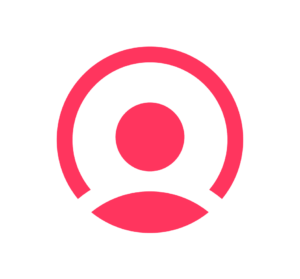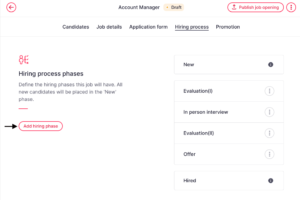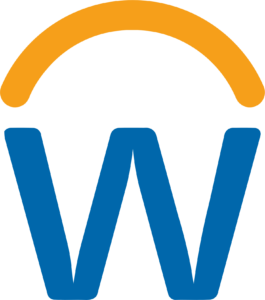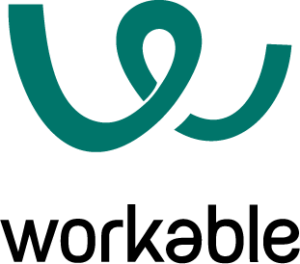Are you tired of sifting through a mountain of resumes and struggling to keep track of job applications? In this Applicant Tracking Software Guide, we’ll explore the top ATS (Applicant Tracking System) software solutions that will revolutionize your hiring process. Discover the ultimate tools that centralize job applications, resumes, and candidate information, bringing efficiency to every step of your recruitment journey. From automated resume parsing to seamless collaboration and enhanced communication, these top ATS software options will save you time, streamline your hiring process, and help you find the perfect candidates. Get ready to take your hiring process to the next level with the best ATS software on the market.
What is an Applicant Tracking System?
An Applicant Tracking System (ATS) is a software tool that helps companies manage their hiring process more efficiently. It’s like a central hub where all job applications, resumes, and candidate information are stored and organized. The best applicant tracking system will include built-in AI features to speed up your recruitment process. Overall, an efficient ATS system will help provide a structured hiring process, match you with the best applicant, and include visuals to see an overview of your candidate’s progress throughout the process.
Here’s how an ATS works:
Keep in mind that different software offer different features, but the most common features are included here.
Job Posting and Application Management
Applicant tracking systems let companies create and post job openings on different platforms and job boards. It collects and stores all the applications and resumes that are submitted, making it easier for hiring teams to keep track of them.
Resume Parsing
ATS software can automatically read and extract important information from resumes. This saves time because it doesn’t require manually entering data. All essential information will be auto-filled so you can focus on finding qualified candidates and not sorting through resumes.
Candidate Screening and Evaluation
ATS platforms help filter and evaluate candidates based on specific criteria and qualifications. Recruiters can search for keywords in resumes to find the most suitable candidates. This matches you to the best applicants faster and creates a more efficient hiring process.
Interview Scheduling
Applicant tracking systems help schedule and coordinate interviews with candidates. It sends invitations, manages availability, and even sends reminders. This streamlines and enhances the recruiting process for both candidates and employers.
Collaboration and Communication
ATS platforms allow team members involved in the hiring process to share candidate information, feedback, and notes. It also provides a way to communicate with candidates through email or messages within the system.
Reporting and Analytics
An applicant tracking system (ATS) can generate reports and provide insights about the hiring process. For example, it can show how long it takes to hire someone, where candidates come from, and other useful data to improve hiring strategies. Strong reporting capabilities are crucial for ATS platforms to have, so employers can make the necessary adjustments to have a more efficient hiring process.
Compliance and Data Security
ATS systems prioritize keeping candidate data secure and complying with privacy regulations, like GDPR.
In simple terms, an ATS makes it easier for companies to manage job applications, find the right candidates, schedule interviews, collaborate with team members, and make informed hiring decisions while ensuring data security and privacy compliance.
How to choose an applicant tracker for your organization
In order to make an informed decision, evaluate each applicant tracker based on the following criteria.
Identify your needs: Assess your hiring process and determine what features you require in an ATS software.
Consider scalability and customization: Check if the ATS can grow with your organization and be customized to fit your workflows.
Look for user-friendly options: Choose an ATS with an easy-to-use interface and a smooth implementation process.
Ensure integration capabilities: Verify if the ATS can integrate with your existing HR tools and systems. Or additional tools to make your recruitment process easier, like Ringover, which embeds Voice over Internet Protocol (VoIP). Ringover is ideal for companies like staffing agencies looking for an easy-to-use and scalable solution without the need for traditional phone hardware.
👉 Want to learn more about tools for staffing agencies? Check out the top 10 staffing agency software in the US.
Prioritize data security and compliance: Make sure the ATS has robust security measures and complies with relevant data protection regulations.
Evaluate customer support and training: Assess the level of support provided by the ATS provider and the availability of training resources.
Consider pricing and ROI: Evaluate the pricing structure and determine the value and return on investment the ATS offers. For more information on how to calculate ROI of a tracking system, skip to the end of this article.
By considering these factors, you can choose an ATS that meets your needs, enhances your hiring process, and provides a positive return on investment.
Why do you need an Application Tracking System?
Whether you work in the HR department of a small to medium-sized company or a larger corporation, you know the hassle of sifting through countless resumes to find the ideal candidate. This is where the benefits of a candidate tracking software really come in handy. Staffing agencies and ATS providers come in many different shapes and sizes, but the following list will help you understand what features to look for and what the benefits of using a candidate screening software are.
Job openings
Understaffed at one of the physical store locations of your retail company? Looking for nurses to work at your long-term healthcare organization? Maybe you need skilled workers with very specific skills to work at your manufacturing plant.
Whoever you are looking to hire, you’ll be able to find by posting a job opening on the right platform, and phrasing the job description to attract the right talent for the job.
AI-augmented application trackers are the way to go – they help phrase position descriptions, choose the right skills to include, and correct any mistakes you may make based on a brief description you provide.
Candidate Tracking
Once the application start coming in, get ready for one of the hardest parts of the hiring process: selecting candidates to interview from a high volume of possible candidates.
Here’s where CV and application screening are very useful. Especially with high volume hiring. AI helps choose applicable workers based on skills found in the documents provided. A human touch is necessary of course to make a final decision. But hours of manual labor are cut from the process thanks to innovative applicant screening tools.
Database for recruiting
Have a high volume of very promising applicants, but have already found the right talent for the open position? You can’t hire everyone of course. With consent, you can keep the application data secure of candidates who have applied for each position. When the time comes to hire more people, you can choose talent from your database of job applicants and reach out to them to see if they are interested in working for you.
See our list of the best application tracking systems of 2026 below!
Top 7 Applicant Tracking System List

1. Factorial
Factorial is a powerful and intuitive ATS designed to streamline your hiring process. It offers features such as centralized candidate management, resume parsing, collaborative hiring workflows, and seamless communication with candidates. Factorial also provides additional HR tools, making it a comprehensive solution for managing the entire employee lifecycle.
Additionally, Factorial has built-in AI features that streamline the recruitment process. With its user-friendly interface and customizable options, Factorial is an excellent choice for businesses looking for an efficient and all-in-one ATS solution. It is one of the best applicant tracking systems on the market, thanks to its robust suite of features that also support core business functions like HR, finance, and payroll.
Factorial Pros & Cons
Pros
✅ Ease of use
✅ Payroll integration (and more)
✅ More than just an ATS – comprehensive HR toolkit
✅ Free Demo
Cons
❌ No desktop version – only offers a mobile app and cloud ATS platform
For a closer look at Factorial’s ATS features, scroll down!
Also, if you want to a short introduction to the other features Factorial offers, we recommend this video:
Factorial ATS features
Factorial offers a range of powerful features to enhance your hiring process and optimize your recruitment efforts. Here are some key features provided by Factorial’s Applicant Tracking System (ATS):
Company Page
Create a dedicated company page to showcase your organization’s history, values, and open positions. This page serves as an essential element of your online presence, allowing potential candidates to learn more about your company and culture.
Factorial also allows people interested in working for your company to apply without the need to create open positions.
Embedded Job Openings
Easily embed your list of open positions on your company website, ensuring that interested candidates can view and apply for available roles directly from your site.
Hiring Phases
Factorial guides you through the various stages of the hiring process. From screening to offer, you can seamlessly manage each phase. Appoint a dedicated hiring manager to oversee the process, ensuring a smooth and efficient experience for both recruiters and candidates.

Without software to help structure the process, the recruitment process can quickly become confusing. Keeping track of all of the candidates, remembering to update all of them can turn searching for the best candidate to fill the open position into a nightmare for all of those involved.
Check out this Hiring Process Checklist to stay organized!
Screening
Efficiently review resumes and applications to identify candidates who meet the basic qualifications for the position. Evaluate factors such as education, work experience, and specific skills to narrow down the applicant pool.

Interviews
Conduct comprehensive interviews with shortlisted candidates to assess their qualifications, experience, and cultural fit. Factorial supports integrations to allow different interview formats, including in-person, phone, and video interviews.
Assessments
Depending on the role, utilize assessments to measure candidates’ skills, knowledge, and aptitude. Factorial offers various assessment options, such as aptitude tests, personality assessments, and skills tests.
Job Offers
Once the ideal candidate is identified, extend a job offer including essential details like salary, benefits, and start date. You can also include contingencies, such as background checks or drug screenings.
Onboarding
Streamline the onboarding process by inviting new employees to a restricted-access version of Factorial called Welcome Space. This allows them to complete tasks like uploading personal documents and providing necessary information before their first day.
Message Templates
Simplify communication with candidates using message templates. These templates ensure consistency, save time, and allow for customization with relevant details that can increase the likelihood of a successful hire.
Additional Features
Factorial offers several additional ATS features, including an internal job openings page with referral capabilities, talent pool management, data retention options to comply with regulations like GDPR, automated data erasure for expired candidates, and a tag manager to easily filter and search for specific qualifications and experiences in the talent pool.
AI in the Recruitment Process
Factorial’s integration with AI has given recruiters even more freedom to spend their time with people instead of paperwork. AI helps hiring managers filter through resumes and analyze experience, and match skills to determine the best fit for a role. This helps recruiters make informed decisions and identify top candidates quickly. Factorial AI improves the objectivity and effectiveness of hiring, leading to better talent acquisition outcomes.
For more information on AI recruiting software, read our article on the top AI tools for recruiting.
Free Software Trial
Choosing the best recruiting software isn’t easy!
Factorial provides a 7-day free trial and offers a complimentary demo with an expert who can address any inquiries you may have regarding the software. Click the banner below to schedule a demo today!
With Factorial’s ATS features, you can streamline your hiring process, enhance candidate engagement, and make data-driven decisions to build a successful workforce. The market for applicant tracking systems is huge – this makes it even harder to choose from the sheer amount of software options on the market. Do your research, test the apps you like, and make an informed decision.
For more ATS alternatives, read on.

2. Workday Recruiting
Workday Recruiting is a robust ATS known for its comprehensive features, including advanced candidate tracking, collaborative hiring workflows, and seamless integration with other HR systems. You can publish open positions to multiple job boards and automate the screening process. Additionally, Workday offers other HR tools; however, they come at an additional cost.
Workday Pros & Cons
Pros
✅ Ease of use
✅ Adequate app integration
Cons
❌ No Free Trial
![]()
3. Greenhouse
Greenhouse is a highly regarded cloud ATS that offers customizable hiring pipelines, intuitive interview scheduling, and insightful analytics to optimize your hiring process and make data-driven decisions. It’s packed with all the necessary ATS tools to make hiring decisions easier.
Greenhouse Pros & Cons
Pros
✅ Customizable
✅ Specifically for recruiting
Cons
❌ Candidate search in database needs improvement
❌ Complicated user interface
❌ No free trial
![]()
4. JazzHR
JazzHR is a cloud ATS system that is user-friendly and ideal for small and mid-sized businesses. It offers candidate tracking, resume parsing, and a wide range of integrations, all within an intuitive interface that simplifies hiring tasks. Additionally, JazzHR offers advanced features to support your recruitment team and create a more efficient recruitment process.
JazzHR Pros & Cons
Pros
✅ Useful analytics
✅ Customer support
Cons
❌ Confusing automatic responses
❌ Complicated user interface
![]()
5. Lever
Lever is a modern Applicant Tracking System loved for its intuitive design and collaborative features. With Lever, you can streamline your hiring process, manage candidate pipelines effectively, and enhance team collaboration. Lever is a popular choice; however, it can be expensive for small businesses and is better suited for larger companies. Although with the right company size, it is one of the best applicant tracking system solutions for recruitment teams to ease their workload.
Lever Pros & Cons
Pros
✅ Easy to use
Cons
❌ Poor design for candidate experience
❌ Formatting issues on feedback form

6. Workable
Workable is a popular ATS known for its user-friendly interface and comprehensive features. It offers job posting management, candidate tracking, collaborative hiring workflows, and integration with various HR tools. Workable streamlines the entire recruitment process, from sourcing candidates to making offers, making it an excellent choice for organizations of all sizes.
Workable Pros & Cons
Pros
✅ Easy to navigate
✅ Templates
Cons
❌ Search functions need improvement
❌ Issues with same candidate applying for different positions
![]()
7. iCIMS
iCIMS is an enterprise-level ATS trusted by large organizations. It provides a comprehensive suite of ATS tools, including candidate sourcing, video interviewing, and robust reporting capabilities, ensuring efficient and scalable hiring processes.
iCIMS Pros & Cons
Pros
✅ Customization
✅ Simple but functional layout
Cons
❌ Difficult to track internal hiring process
❌ Reports limited
Benefits of Applicant Tracking Systems
There are several benefits of utilizing an applicant tracking system. Moreover, you can measure n ATS’s ROI in different ways:
- Cost savings: Calculate how much time, paper, or money is saved by automating manual tasks and reducing reliance on external recruiters.
- Time-to-hire: Measure how long it takes to fill a position before and after using an ATS. A shorter time-to-hire saves costs and improves productivity.
- Quality of hire: Assess the performance and retention rates of candidates hired through the ATS compared to previous hires. Better hires increase productivity and reduce turnover costs.
- Source effectiveness: Analyze ATS data to identify the most effective channels for finding qualified candidates. Allocate resources wisely by focusing on the channels that provide the best results.
An Applicant Tracking System can bring significant ROI, especially for organizations with high recruitment volumes or complex hiring processes. Evaluate your organization’s needs and choose an ATS that suits your requirements to maximize benefits and ROI.
To save even more money on the process of choosing the best applicant tracking system to suit your needs, take advantage of free software trials! Factorial not only offers a 7-day free trial, but also a free demo with an expert to answer all of your questions about the software. See for yourself why Factorial is the best applicant tracking system for your team.
The information presented on this page is based on publicly available sources, but not limited to workday.com, jazzhr.com, icims.com, workable.com, Capterra public reviews, G2 public reviews, and Trustpilot public reviews. The comparisons between Factorial and other providers, are intended solely for the illustration of the respective software features, pricing and functionalities. All information regarding features, prices, and integrations may be subject to change without prior notice. Factorial assumes no liability for the accuracy, completeness, or timeliness of the information presented. We recommend contacting the respective providers directly to obtain the most accurate and up-to-date information. All legal regulations regarding spanish fair advertising and competition law are fully observed by us; if you have any concerns, please reach out to us. The comparisons presented do not constitute a final evaluation or recommendation for any provider, but serve solely as an informational source.


